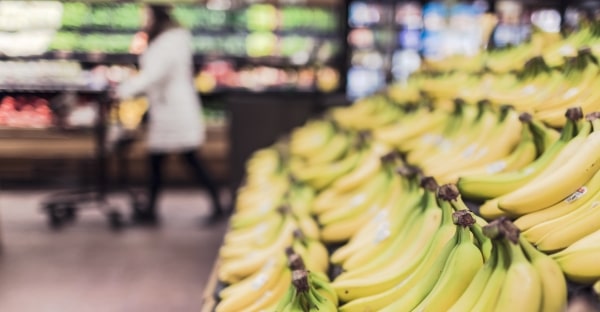With sales of $600 billion per year, food and beverage is the largest retail category in the U.S. by far. However, it’s also the category that has been the least disrupted by e-commerce. This is about to change. Online grocery sales are expected to grow by 21 percent annually through 2018, outpacing other product categories. Experts predict that these sales will reach $18 billion in the next three years (Business Insider).
Though many in the food and beverage sector may not see e-commerce as a pressing issue, consumer demand indicates the opposite. A recent survey by Nielsen found that 25 percent of consumers now order grocery products online, and 55 percent are willing to do so in the future. On top of that, many are willing to pay a premium for same-day delivery. Convenience and a large selection of products are just a few reasons this trend is attractive to consumers.
Food and Beverage E-Commerce Pioneers
A few companies are leading the charge in the grocery e-commerce space. Tesco, a multinational grocery and general merchandise retailer, has dominated grocery e-commerce in the United Kingdom. They offer their customers the ability to “click and collect”—or in other words, place an order online and then go pick it up at a local store. In some parts of the country, they also offer home delivery based on a customer’s preferred timeslot. Over the past decade, the company has developed a dedicated e-commerce infrastructure alongside their traditional retail infrastructure.
Newer entrants to the space include Amazon, Google, and Instacart. Amazon Prime Now and Google Shopping both offer same-day delivery of non-perishable foods purchased online. Under the Amazon Fresh program, Amazon has established dedicated fresh and frozen delivery operations. With Instacart, consumers can order items from their local grocery store online and expect them to be delivered within an hour. To date, these services are only available on a local or regional basis in select cities.
Challenges and Considerations
Companies with expertise in grocery, logistics, and the internet are best positioned to capitalize on grocery e-commerce. To date, no single company has fully mastered all three components, so future market leadership is anyone’s game. Though the benefit can be great, breaking into the e-commerce space brings a slew of challenges. Freshness, higher susceptibility to damage, and low profit margins are problems that food and beverage retailers face. These retailers need to understand which practices will be most effective for their business before investing heavily in e-commerce (Food Logistics). Below are some additional things to consider.
- All retailers—food and non-food—have to address challenges that come with delivery. It’s important to examine the pros and cons of the different options available: home delivery, in-store pickup, delivery to a “locker” site, or some combination of these.
- Volume will play an important role in the long-term success of grocery e-commerce. Profitability in this area relies heavily on economies of scale; the faster a retailer can turn inventory, the faster they will see return on investment (Food Logistics).
- Optimizing packaging for in-store displays may lose some of its importance in years to come. Factors like ease of cost and transport are likely to become more important than package design as e-commerce grows.
The numbers don’t lie; online groceries are likely to be the next big thing in e-commerce. Food retailers that realize the potential of this growing trend, and start thinking through their e-commerce strategy now, will set themselves up for better success in the future.
Are you ready for major changes in the food and beverage industry? Our team of managed transportation experts can help you prepare for these changes and optimize your supply chain.

